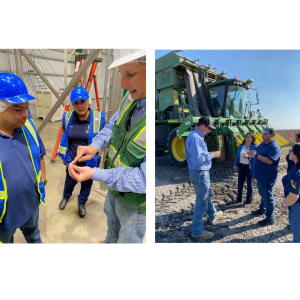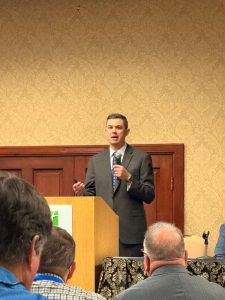This month, the Department of the Interior’s U.S. Fish and Wildlife Service announced four proposed rules to restore Endangered Species Act regulations to their proven 2019 and 2020 framework. The proposals, two of which were issued in coordination with the Department of Commerce’s National Oceanic and Atmospheric Administration’s National Marine Fisheries Service, would revise regulations finalized in 2024 that expanded federal reach, created unnecessary complexity and departed from the statute’s clear language. These actions implement Executive Orders under President Trump, which direct agencies to remove regulatory barriers that hinder responsible resource development and economic growth while maintaining core conservation commitments. “This administration is restoring the Endangered Species Act to its original intent, protecting species through clear, consistent and lawful standards that also respect the livelihoods of Americans who depend on our land and resources,” said Secretary of the Interior Doug Burgum. The four proposed rules are:
- Listing and critical habitat (50 CFR part 424):
The services jointly propose to restore the 2019 regulatory text governing listing, delisting and critical habitat determinations. The proposal ensures decisions are based on the best scientific and commercial data available while allowing transparent consideration of economic impacts. It reestablishes the longstanding two-step process for designating unoccupied habitat, restores clarity to the definition of “foreseeable future” and reinstates flexibility to determine when designating critical habitat is not prudent.
- Interagency cooperation (50 CFR part 402):
The services jointly propose to return to the 2019 consultation framework by reinstating definitions of “effects of the action” and “environmental baseline,” removing the 2024 “offset” provisions and restoring section 7 procedures consistent with the statutory text. These changes respond directly to the Supreme Court’s decision in Loper Bright Enterprises v. Raimondo, which overturned the Chevron deference standard and reaffirmed that agencies must adhere strictly to the law as written.
- Threatened species protections (50 CFR part 17; section 4(d)):
The Fish and Wildlife Service proposes to eliminate the “blanket rule” option and require species-specific 4(d) rules tailored to each threatened species. This approach reflects the single best reading of the statute under Loper Bright and ensures that protections are necessary and advisable to conserve each species without imposing unnecessary restrictions on others. It also aligns service policy with the National Marine Fisheries Service’s longstanding species-specific approach.
- Critical habitat exclusions (50 CFR part 17; section 4(b)(2)):
The Fish and Wildlife Service proposes to reinstate its 2020 rule clarifying how economic, national security and other relevant impacts are weighed when determining whether to exclude areas from critical habitat. The revised framework provides transparency and predictability for landowners and project proponents while maintaining the service’s authority to ensure that exclusions will not result in species extinction.
“These actions reaffirm our commitment to science-based conservation that works hand in hand with America’s energy, agricultural and infrastructure priorities,” said Fish and Wildlife Service Director Brian Nesvik. “By restoring clarity and predictability, we are giving the regulated community confidence while keeping our focus on recovery outcomes, not paperwork.”



